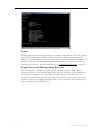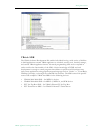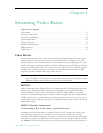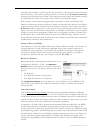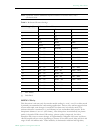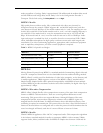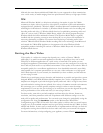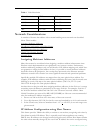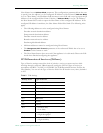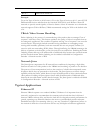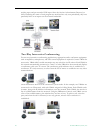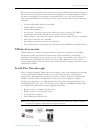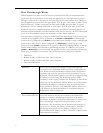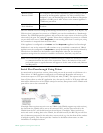
22 © 2008 VBrick Systems, Inc.
Table 4. Video Resolution
Network Considerations
A number of features that address video stream handling across networks are described
below. These include:
Assigning Multicast Addresses
IP Address Configuration using Host Names
IP Differentiated Services (Diffserv)
VBrick Video Stream Handling
Network Jitter
Assigning Multicast Addresses
Many factors must be considered when designing a multicast address infrastructure since
Ethernet switch implementations can significantly vary between vendors. Furthermore,
multicast addressing techniques rely on an Ethernet to IP Address mapping rule, which does
not guarantee a unique physical address. In fact, it is possible to create multicast addresses
that differ from an IP perspective, but overlap when presented to the Ethernet network.
Addresses created in this situation can cause significant network and operational problems.
Specifically, multiple IP Addresses are mapped into the same physical layer address. For
example, all IP multicast addresses with the same or differing first octet, and the second octet
differing by exactly 128, map to the same physical address (226.5.5.4, 227.5.5.4, and
228.133.5.4 all map to the same physical address).
Another factor to keep in mind when assigning multicast addresses is that 224.x.x.x is a range
containing reserved addresses, particularly in the range 224.0.0.x. For example, 224.0.0.1 is
the 'all hosts' multicast address and 224.0.0.2 is the 'all routers' reserved address. Other
224.0.0.X numbers are reserved for RIP, OSPF, DVMRP, etc. Here are some recommended
rules for multicast IP Address assignment:
1. Do not use 224 in the first octet since many of these are reserved.
2. Use a digit between (225–239) for the first octet and standardize on it for each network.
3. In the second octet, either use numbers from 1–127, or
129–255, do not mix ranges on a
given network.
IP Address Configuration using Host Names
This feature provides VBricks the ability to unicast to one another, recognizing each other by
Host Name instead of IP address. This is especially useful when appliances are running
DHCP, since IP addresses can change between being rebooted, whereas Host Names remain
the same unless manually changed by the user. Each IP address that can be configured using
Video Resolution NTSC PAL
Full D1 720 x 480 720 x 576
2/3 D1 480 x 480 480 x 576
1/2 D1 352 x 480 352 x 576
SIF 352 x 240 352 x 288



